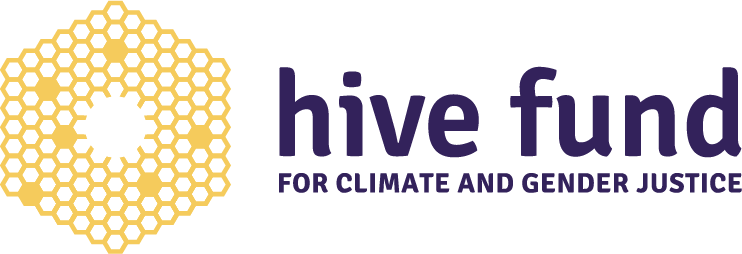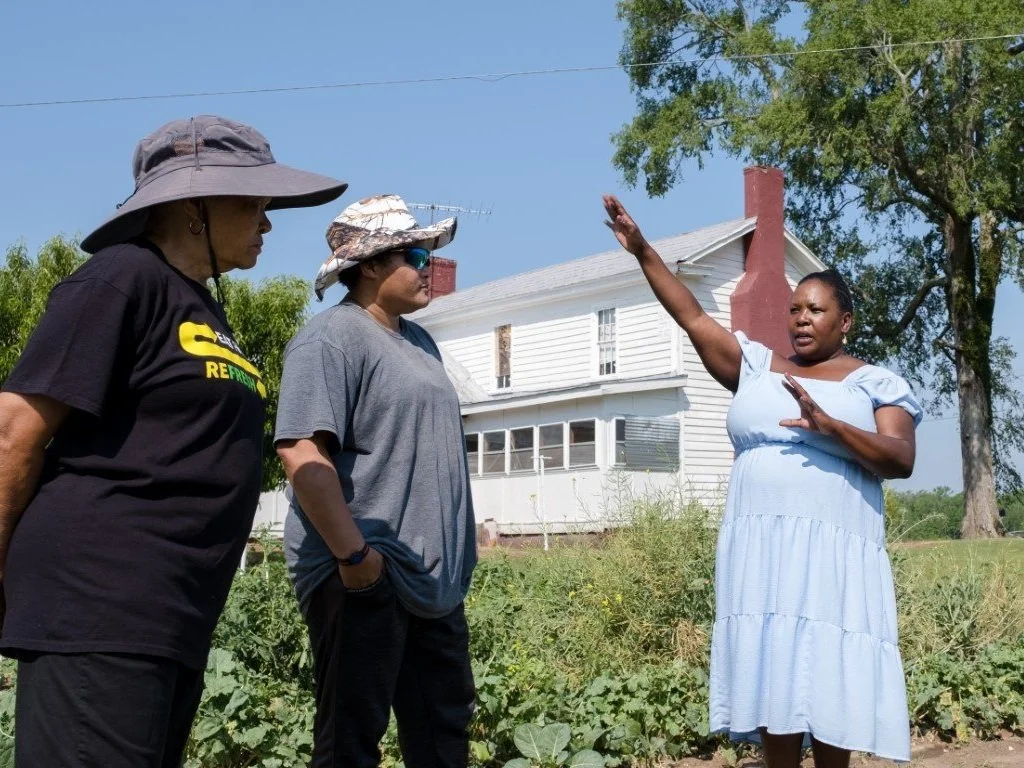Scaling Investment in Community-Driven Climate Solutions
Ashley Johnson (left) and Ines Sigel from LINK Houston, a transportation equity organization working to extend zero emission bus routes into the city’s predominately Black and Brown Northeast quadrant.
As we toured the South last spring talking to more than 70 climate and environmental justice groups, eagerness to “build the good” came up again and again as a top theme. Now these place-based groups — representing communities of color and working-class communities — are elevating powerful visions for implementing the Inflation Reduction Act (IRA) and Infrastructure Investment and Jobs Act in ways that improve their lives and the lives of a broad swath of Americans. They are ready to provide the organizers, doers, builders, and connectors to make those visions come to life.
In partnership with them, the Hive Fund is co-creating a strategic, place-plus grantmaking approach, supporting constellations of groups in key geographies across the US South in leveraging these new federal climate programs to build and scale community-driven climate solutions. This includes:
Continuing to make multiyear grants to groups who are reducing pollution and building clean energy alternatives in their communities and across regions.
Identifying and funding up to ten iconic IRA climate justice zones that will offer concrete examples of how progress can happen in the South. These efforts will build public and political momentum for continued investment in a clean energy transition by pairing community-based project priorities with new financing streams in ways that maximize both community benefits and emission reductions; provide compelling narratives that broaden and intensify public support; and offer proof points for new lending products, capital stacks, and economic frameworks that help equitable clean energy and just transition projects “pencil out” beyond pilot projects and scale.
Helping grantee partners across the US South prepare to access $3 billion in EPA block grants for community-based organizations in disadvantaged communities, coming available as soon as early 2024. These block grants can help community groups and partnerships overcome barriers to accessing loans and financing for scaled project implementation — including the $27 billion in Greenhouse Gas Reduction Fund grants and loans and funding from other agencies.
Ajulo Othow of EnerWealth Solutions (right) is partnering with Roanoke Cooperative to develop a utility-scale solar + storage project on land leased from the Mitchell family in North Carolina, generating income for the farmers while providing clean, reliable power to the electric cooperative.
Building the capacity of community-based lenders to access capital from the Greenhouse Gas Reduction Fund and other new programs to finance community projects, explore new lending products, and increase access to resources that meet community needs.
Coordinating with equity-aligned climate re-granters to raise and move new philanthropic funds quickly and strategically to place-based groups in disinvested communities. Relatively small amounts of philanthropic funding now (hundreds of millions of dollars) can help groups in disinvested communities unlock 10 times or even 100 times as much in public and private funding and create a cascade of local and global benefits. Skimping on support for strategic community-based efforts is a mistake we can’t afford to make.
We’re faced with an unprecedented opportunity to transform our power systems so that flipping on a light switch no longer contributes to disproportionate cancer rates in frontline communities, but instead builds wealth and health in those same places as cleaner, and community-benefitting solar, wind, energy efficiency, and batteries displace dirty coal, oil, and gas. To learn more about our place-plus strategy and investment opportunities for funders, contact Melanie Allen (melanie@hivefund.org) or Erin Rogers (erin@hivefund.org).


